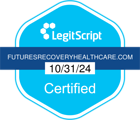
How Long to Wait Before Taking Suboxone to Avoid Precipitated Withdrawal
While opioid withdrawal is not typically life-threatening, it is not recommended to stop taking an opioid drug, such as heroin, methadone, and narcotic pain relievers, suddenly or “cold turkey.” Although not usually life-threatening, opioid withdrawal can still be very uncomfortable and may managed by certain medications, such as Suboxone.
Suboxone is an Food and Drug Administration (FDA) approved opioid addiction medication. It contains four parts buprenorphine, a partial opioid agonist, and one part naloxone, which is an opioid antagonist. Typically, Suboxone is taken via a strip that dissolves under the tongue, usually once or twice per day, as part of a medication-assisted therapy regiment. While Suboxone does help with opioid addiction, since buprenorphine is an opioid narcotic, it can be abused. Abuse happens when higher-than-intended doses are taken.
What Is Precipitated Withdrawal?
Precipitated withdrawal is the rapid onset of opioid withdrawal symptoms brought on by taking a medication such as Suboxone before the last of the other opioids are completely out of your bloodstream. Withdrawal may be precipitated at different times, depending on when you took your last dose and your level of physical dependence as well as what type of other drug or drugs you may have taken. Each drug has a particular half-life that determines how long it remains in your bloodstream. Short-acting opioids, such as heroin, morphine, and most narcotic pain relievers, have shorter half-lives than longer-acting opioids like methadone, for example.
Some prescription narcotic opioids are designed to have an extended-release format as well, which extends the amount of time it will remain in your body. Precipitated withdrawal can start if you take Suboxone before the other opioid drug leaves your body. The timeline may differ from person to person depending on several factors, including personal physiology and genetics. Generally speaking, you should wait to take Suboxone the following amounts of time after your last dose of these specific drugs:
- Morphine: 8-12 hours
- Heroin: 12-24 hours
- Oxycodone and hydrocodone: 12-24 hours
- Oxymorphone: 24-30 hours
- Methadone: 36 hours to a week
A general rule of thumb to avoid precipitated withdrawal is to wait until opioid withdrawal symptoms start, as this typically means the drug has mostly left your bloodstream.
Precipitated Withdrawal and Suboxone
Most opioids are full agonists, meaning that they activate opioid receptors in the brain and body, blocking pain sensations, enhancing mood, and creating a euphoric rush when abused, often described as a “high.” Buprenorphine, the partial agonist in Suboxone, still activates opioid receptors, but not at the same level as full agonists. You may still feel some of the opioid effects, just not in the same intensity, and most of the time buprenorphine will not produce a “high” either.
Buprenorphine has a long half-life, generally staying in the system for at least 24 hours, as well as a ceiling effect, meaning that after a certain point you will cease to receive any benefit from taking it. Buprenorphine replaces the full opioid agonist with lesser effect, so if it is taken too soon, precipitated withdrawal can start as the full agonist is suddenly “kicked out” of your system. This can create quite a shock and may be very uncomfortable. The naloxone in Suboxone is a partial opioid antagonist as well, which is often used to reverse opioid overdose side effects and can also cause precipitate withdrawal. This part of Suboxone is more of an abuse deterrent, preventing potential diversion and abuse. Naloxone effectively blocks the opioid receptor sites, preventing other opioids from attaching, so even if you do take another opioid, you will not get “high.”
Mixing alcohol or other drugs with Suboxone may also cause precipitated withdrawal. It is important to be honest about your last dose of an opioid drug when seeking treatment for opioid abuse as well. Suboxone is effective for use starting in early withdrawal, during what is called the induction phase of medically assisted opioid addiction treatment. When used as directed, and at the right point during treatment, Suboxone can be a very effective tool for managing opioid withdrawal symptoms and cravings.
Opioid Withdrawal Symptoms
Generally speaking, the more physically dependent someone is on a drug, the longer it may take for the drug to leave their system, which means they might take Suboxone too soon and suffer from precipitated withdrawal. Precipitated withdrawal symptoms may be more intense and have a much faster onset than regular opioid withdrawal. Symptoms of both withdrawal and precipitated withdrawal may include:
- Nausea
- Vomiting
- Abdominal cramps
- Diarrhea
- Yawning for no apparent reason
- Dilated pupils
- Excessive tearing
- Runny nose
- Muscle aches
- Goose bumps or chills
- Sweating
- Agitation
- Anxiety
- Insomnia
- Drug cravings
Being aware of these symptoms is a good way to help your doctor, or the medical professional guiding you through addiction treatment, to identify the right time to start Suboxone. The timing of when to start, and take, Suboxone will vary greatly from person to person. Recognizing the psychological and flu-like physical symptoms that may indicate that withdrawal has started may be the best indicator that the opioid is leaving your bloodstream and that medication-assisted therapy can safely begin.
The compassionate and highly trained, Futures Recovery Healthcare team strives to provide education, support, and behavioral therapies in conjunction with medications at the proper times in order to promote a successful recovery from a substance abuse disorder. Call today to learn about our specialized and effective treatment programs.




